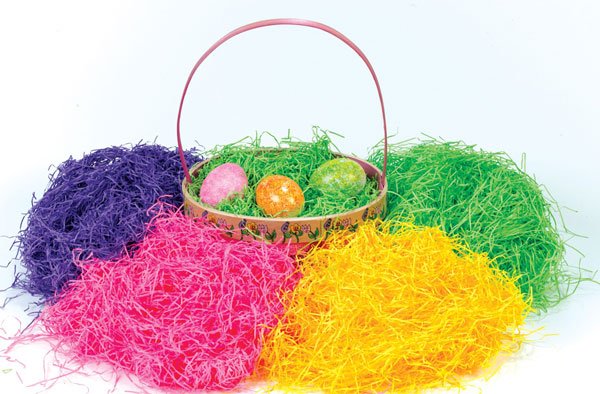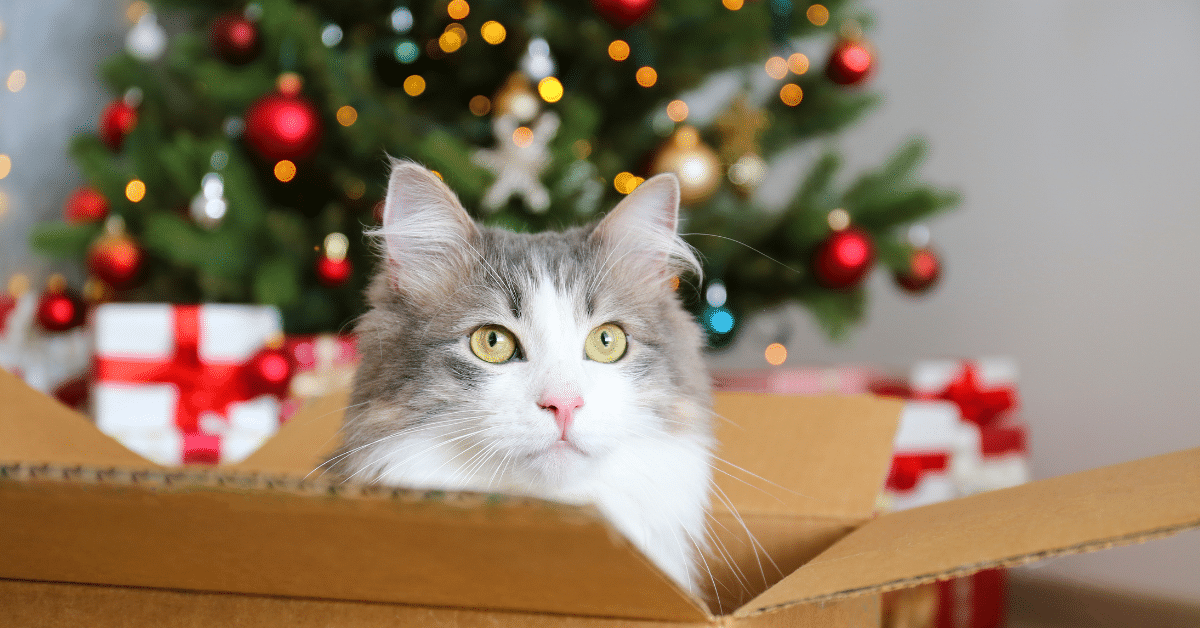The Hidden Hazards of Easter
Not everyone knows of the dangers for pets around Easter. For instance, the Easter grass and plastic eggs used in all those awesome Easter baskets can be very dangerous or even deadly.
EASTER GRASS Photo Credit: www.fun-world.net
Felines love anything that moves or makes noise. Easter grass does both. It’s a surgery waiting to happen with felines and canines alike. Known in the veterinary field as a linear foreign body, this “grass” which in essence is just long strings of undigestible plastic can get “hung up” under the tongue or further down in the stomach or digestive tract. The first signs are usually vomiting and/or straining to dedicate, or a painful abdomen. Never ever try to pull on Easter grass, or any other linear type material hanging from the rectum or mouth, as you can potentially cause internal intestinal damage. 
PLASTIC EASTER EGGS
Those plastic eggs that we all fill with treats then hide for the Easter egg hunts are potentially dangerous. A canine can very easily chew and swallow them. The sharp shards of plastic can potentially puncture the walls of the esophagus, stomach or intestines, thus becoming an emergency surgical issue. 
HARD BOILED EGGS
Hard boiled eggs, while not hazardous themselves, can spoil quite quickly. If a spoiled egg is ingested, it could lead to pancreatitis, a potentially fatal condition.  ‘
EASTER LILIES
Those beautiful Easter lilies that we all have at Easter time are highly toxic to our feline family members. Just rubbing against a lily and licking the pollen off her fur can be toxic to your cat. And early sign of toxicity is vomiting, which usually occurs soon after consumption. Within 12 – 24 hours you might notice that your feline is urinating much more frequently. If renal failure sets in, you may notice that your feline has stopped urinating, which can lead to death in as little as a week if left untreated. If you suspect you feline has ingested any part of a lily, daffodil or lily related plant, please contact your veterinarian immediately. If your canine happens to ingest any lily or lily type plants, it is usually a gastrointestinal irritant and will cause vomiting and possible diarrhea, but is not life threatening. 
CHOCOLATE
Not all chocolates are created equally. There are two components in chocolate that can affect our canine friends: CAFFEINE and THEOBROMINE. Baker’s chocolate and dark chocolate contain the highest concentrations, while white chocolate contains the least.
The most common early signs that your pet has ingested chocolate include: hyperactivity, increased heart rate, vomiting, diarrhea, restlessness, frequent urination, rapid breathing and stiffness. Cardiac problems, seizures, coma and death can occur if pets aren’t treated within 4 – 6 hours, after ingestion.
Just 2 ounces of baker’s chocolate can make a 50 pound canine severely or even fatally ill. If you suspect your pet has consumed chocolate, please contact your veterinarian immediately. 
CANDY AND GUM
Nowadays, some makers of sugar-free gums and candies use Xylitol, an artificial sweetener that can be beneficial to human diabetics, but is extremely toxic to our canine friends. Small amounts of xylitol can cause a drastic drop in glucose levels and lead to seizures, coma and possible death. Larger amounts of xylitol can cause liver failure in your canine friend. In this case, even with intensive veterinary intervention recovery is unlikely. If you think your canine has ingested xylitol, seek veterinarian assistance immediately.






